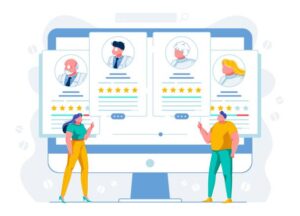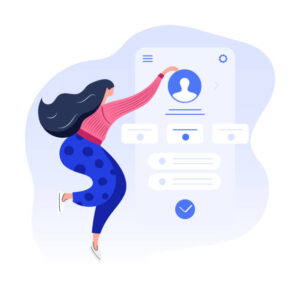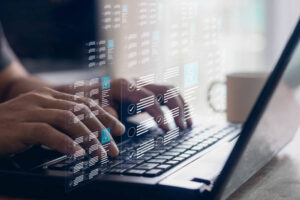Customer Profiling With AI: A Guide For Marketing Teams
-
Bella Williams
- 10 min read

Customer profiling is a process that involves primarily gathering information on current customers as well as ideal customers. From this information, you can create customer profiles that give you greater insights into who your ideal customer is and why they behave the way they do.
In the fast-paced world of marketing, understanding your customers is the key to unlocking success. Imagine having the ability to accurately target your ideal customers, predict their preferences, anticipate their needs, and deliver tailor-made experiences that leave them coming back for more.
Customer profiling is of paramount importance for marketing teams to achieve this, as it forms the bedrock of successful marketing strategies today. By analyzing and understanding the characteristics, preferences, behaviors, and needs of their target audience, businesses can create more personalized and relevant marketing campaigns.
In marketing, where data reigns supreme and personalization is the key to winning over customers, one tool has emerged as the ultimate game-changer for marketing teams – Artificial Intelligence. This technological revolution has transformed the concept of customer profiling, a powerful method that empowers businesses to understand their audience like never before.
But why do businesses need to have a deep understanding of their customers and invest time and resources to profile them?
Understanding customers has become a make-or-break factor for companies in all industries. Personalization is no longer just a trend but an expectation, and businesses that tailor their offerings to meet individual needs create deeper connections with their audience. Building customer loyalty through this understanding results in repeat purchases and brand advocacy.
It is imperative to say that businesses that prioritize customer understanding and leverage data-driven insights position themselves for success in the dynamic world of B2B marketing in the 21st century.
In this comprehensive guide, we will delve deep into the fascinating world of Customer Profiling with AI, exploring its remarkable potential and the myriad of ways it can transform your marketing strategies.
What is Customer Profiling?
 Customer profiling is the act of describing a customer or set of customers using demographics, psychographics, buying patterns, and other factors. In other words, it is identifying the characteristics of the people most likely to purchase your product or service.
Customer profiling is the act of describing a customer or set of customers using demographics, psychographics, buying patterns, and other factors. In other words, it is identifying the characteristics of the people most likely to purchase your product or service.
It is the process of identifying and categorizing customers into distinct groups based on various characteristics and behaviors. The goal of customer profiling is to gain a deeper understanding of your customer base, allowing businesses to tailor their marketing strategies, products, and services to better meet the needs and preferences of specific customer segments.
The process of customer profiling involves collecting and analyzing data from various sources, such as customer demographics, purchase history, online behavior, preferences, and feedback. By examining this data, businesses can identify patterns and trends that group customers with similar traits together.
Key Components of Customer Profiling
- Demographic information: Age, gender, location, occupation, income, etc
- Psychographic traits: Interests, values, lifestyle, attitudes, personality, etc.
- Behavioral patterns: Purchase history, browsing behavior, social media interactions, etc.
- Technographic insights: Preferred communication channels, devices, online habits, etc.
It is essential to recognize that the phrases “customer profile” and “buyer persona” are frequently employed interchangeably. Despite their similarities and substantial overlap, a significant difference exists between the two. Buyer personas are fictional representations of potential customers, whereas customer profiles are formed from a representative cross-section of your real customer base.
Customer Profile vs Customer Persona – Differences
 A customer profile and a buyer persona are both tools used by businesses to understand their customers, but they have some key differences.
A customer profile and a buyer persona are both tools used by businesses to understand their customers, but they have some key differences.
- Definition
- Customer Profile: A customer profile is a description of a customer based on various attributes and data, such as demographics (age, gender, income), geographics (location), behavior (purchase history, product usage), and psychographics (interests, preferences).
- Buyer Persona: A buyer persona, also known as an avatar is a fictional representation of an ideal customer or target audience. Typically, businesses create several personas to encompass a significant portion of their customer base. Although these personas are not real individuals, they are shaped by data and research, some of which may originate from actual customers, if available.
It goes beyond just demographic information and includes detailed characteristics, motivations, goals, challenges, and even a backstory to humanize and give context to the persona.
- Focus
- Customer Profile: A customer profile primarily focuses on the general characteristics and attributes of a group of customers. It provides a broader understanding of the customer base but may lack the depth and personalization of an individual persona.
- Buyer Persona: A buyer persona concentrates on an individual customer or a specific segment within the customer base. It delves deeper into the motivations, needs, and behaviors of this particular customer, providing a more humanized and relatable representation.
- Level of Detail
- Customer Profile: A customer profile is usually more data-driven and may not involve extensive narrative or storytelling. It provides a concise overview of customer characteristics.
- Buyer Persona: A buyer persona is built around storytelling and includes a narrative that brings the persona to life. It incorporates details that help marketers and sales teams empathize with the persona, making it easier to understand their needs and pain points.
- Use Case
- Customer Profile: Customer profiles are helpful for businesses to segment their customer base, analyze customer behavior, and make broad marketing and product decisions.
- Buyer Persona: Buyer personas are particularly useful for marketing and sales teams to understand and target specific customer segments more effectively. They guide content creation, marketing strategies, and customer engagement efforts.
- Representation
- Customer Profile: Customer profiles are typically represented in the form of charts, graphs, or tables, summarizing data and statistics related to various customer attributes.
- Buyer Persona: Buyer personas are usually presented as narrative documents with a fictional name, photo, and a detailed description of the persona’s characteristics, preferences, and motivations.
Overall, customer profile provides an overview of the general characteristics of a customer base, while a buyer persona offers a more personalized and detailed representation of an individual customer or a specific segment, with a focus on understanding their motivations and behaviors. They are both valuable for marketing teams to better comprehend and connect with their customers in different ways.
Customer Profiling vs Customer Segmentation – A comparison

Customer profiling and customer segmentation are related concepts that serve distinct purposes but are often used together to gain a comprehensive understanding of a customer base. Here’s a comparison of the two.
- Definition
- Customer Profiling: Customer profiling is the process of creating detailed descriptions of individual customers or groups based on various attributes, such as demographics, geographics, behaviors, and psychographics. It focuses on understanding the characteristics and preferences of customers to create a comprehensive profile.
- Customer Segmentation: Customer segmentation involves dividing the customer base into distinct groups or segments based on shared characteristics, behaviors, and preferences. It is a broader process that looks at patterns among customers to group them into meaningful categories.
- Scope
- Customer Profiling: Customer profiling focuses on individuals or small groups and aims to create a comprehensive understanding of their needs and preferences.
- Customer Segmentation: Customer segmentation looks at the entire customer base and aims to identify common traits and behaviors among customers to group them into segments.
- Purpose
- Customer Profiling: The primary purpose of customer profiling is to create personalized experiences for individual customers or small groups. It helps in understanding and meeting the specific needs of customers at a granular level.
- Customer Segmentation: The main purpose of customer segmentation is to identify and target specific groups of customers with similar characteristics. It helps in developing targeted marketing strategies and tailored offerings for each segment.
- Level of Detail
- Customer Profiling: Customer profiling involves a higher level of detail, often including specific preferences, habits, and purchase history of individual customers.
- Customer Segmentation: Customer segmentation provides a broader view, focusing on common traits and behaviors among larger customer groups.
- Use Case
- Customer Profiling: Customer profiling is useful for sales and customer service teams to personalize interactions, improve customer satisfaction, and build stronger relationships with individual customers.
- Customer Segmentation: Customer segmentation is valuable for marketing and product development teams to identify target audiences, develop tailored marketing campaigns, and create products that cater to the needs of specific customer segments.
- Representation
- Customer Profiling: Customer profiling is typically represented as individual profiles, showing detailed information about specific customers or small groups.
- Customer Segmentation: Customer segmentation is usually represented in the form of segments or clusters, showing the grouping of customers with similar characteristics.
Though similar, customer profiling focuses on creating detailed profiles of individual customers or small groups to offer personalized experiences, while customer segmentation involves grouping customers based on common characteristics to enable targeted marketing and product strategies.
Both techniques are valuable for businesses seeking to understand and engage with their customers effectively. When used together, they provide a comprehensive approach to customer understanding and segmentation, leading to improved customer satisfaction and business outcomes.
Importance of customer segmentation and targeting
Customer segmentation is the process of dividing a company’s customer base into distinct and homogenous groups based on shared characteristics, behaviors, and preferences. The goal of segmentation is to create segments or clusters of customers who exhibit similar traits, allowing businesses to better understand and address the unique needs and preferences of each group.
The segmentation process typically involves analyzing various data points, such as:
- Demographics: Age, gender, income, education, marital status, etc.
- Geographics: Location, region, country, etc.
- Psychographics: Lifestyle, values, interests, opinions, etc.
- Behavioral: Purchase history, frequency of purchase, product usage, brand loyalty, etc.
Once the data is collected and analyzed, businesses can identify different customer segments with similar characteristics. Each segment represents a distinct target audience with specific traits and preferences.
Customer segmentation offers several benefits, including:
- Targeted Marketing: Businesses can create tailored marketing messages and campaigns that resonate with each customer segment, leading to higher engagement and conversion rates.
- Personalization: By understanding the unique needs of different customer groups, businesses can offer personalized experiences, products, and services.
- Customer Retention: Segmentation enables businesses to identify and cater to their most valuable customers, enhancing customer satisfaction and loyalty.
- Resource Allocation: Businesses can allocate their resources more efficiently by focusing on the most profitable customer segments.
- Product Development: Insights gained from segmentation help in developing products that meet the specific requirements of various customer groups.
Customer segmentation is an essential marketing and business strategy, helping companies better understand their customers and build stronger, long-lasting relationships with them. It enables businesses to make data-driven decisions and optimize their marketing efforts to achieve greater success in a competitive marketplace.
Role of customer profiles in enhancing marketing and sales strategies
Customer profiles play a crucial role in shaping marketing and sales strategies.This enables marketers and sales teams to craft targeted and personalized messages, product offerings, and promotions that resonate with customers. As a result, marketing campaigns become more relevant, leading to increased engagement and higher conversion rates. By creating detailed profiles of individual customers or customer segments, businesses can understand their unique needs and preferences.
Benefits of customer profiling
- Improved Customer Understanding and Empathy
Customer profiles facilitate a deeper understanding of customers’ motivations, pain points, and desires. By analyzing customer data and behavior, businesses gain valuable insights into what drives their customers’ decisions. This enhanced understanding fosters empathy, allowing businesses to address customer needs more effectively and build stronger connections. Customers feel understood and valued, leading to increased loyalty and retention.
- Enhanced Customer Segmentation and Personalized Targeting
Customer profiles are the foundation of effective customer segmentation. Businesses can identify distinct groups with shared characteristics and preferences through profiling. With this knowledge, they can tailor marketing efforts to each segment’s specific needs, interests, and behaviors. Personalized targeting creates a more compelling and relevant customer experience, improving the chances of attracting and retaining customers within each segment.
- Increased Customer Engagement and Satisfaction
When businesses use customer profiles to customize their interactions, content, and products, customers feel more engaged with the brand. Personalized experiences demonstrate that the company values their individual preferences, leading to higher satisfaction levels. Satisfied customers are more likely to become brand advocates and recommend the business to others, contributing to long-term growth.
- Higher Conversion Rates and Sales Growth
Effective use of customer profiles results in better-targeted marketing efforts and personalized product offerings. This, in turn, leads to higher conversion rates as customers are more likely to respond positively to tailored messages and offers. Improved conversion rates translate into increased sales growth, as customers feel compelled to make purchases that align with their preferences and needs.
- Efficient Resource Allocation and Cost-effectiveness
Customer profiles enable businesses to allocate their resources more efficiently. By understanding the most valuable customer segments, they can prioritize marketing and sales efforts accordingly. This targeted approach optimizes resource allocation and ensures that marketing budgets are spent on initiatives that yield the best returns. As a result, businesses can achieve cost-effectiveness while maximizing their impact on customers.
How AI Can Help With Customer Profiling
 AI can play a significant role in enhancing customer profiling by leveraging advanced data analysis and automation capabilities. Here are some ways AI can help with customer profiling:
AI can play a significant role in enhancing customer profiling by leveraging advanced data analysis and automation capabilities. Here are some ways AI can help with customer profiling:
- Data Collection and Integration: AI-powered tools such can efficiently gather and integrate data from various sources, such as app reviews, website interactions, purchase history, and customer support interactions. This comprehensive data collection ensures a more holistic view of customers. Tools like Insight7 help marketing teams analyze the data gathered from different sources to get insights on customers.
- Customer Segmentation: AI algorithms can analyze vast amounts of customer data to identify patterns and group customers into segments based on shared characteristics, behaviors, and preferences. This segmentation enables businesses to understand distinct customer groups better.
- Predictive Analytics: AI-driven predictive analytics can forecast customer behavior, including purchase intentions, churn likelihood, and lifetime value. This insight helps businesses proactively address customer needs and preferences.
- Personalization: AI enables dynamic content generation and product recommendations based on individual customer preferences and behaviors. Personalized experiences enhance customer engagement and satisfaction.
- Sentiment Analysis: AI-powered sentiment analysis tools can process customer feedback and interactions to gauge customer sentiment and emotional responses. This insight helps businesses understand customer perceptions and pain points.
- Fraud Detection: AI algorithms can detect and prevent fraudulent activities by identifying unusual patterns or behaviors, ensuring a secure environment for customers.
- Real-time Customer Interaction: AI-powered chatbots and virtual assistants enable businesses to engage with customers in real-time, providing personalized assistance and resolving queries efficiently.
- Customer Lifetime Value Prediction: AI can estimate the potential value of each customer over their lifetime, allowing businesses to prioritize resources and marketing efforts accordingly.
- Behavior Prediction: AI models can predict customer behavior, such as purchase intent or likelihood to churn, helping businesses proactively address customer needs and reduce customer attrition.
- Customer Journey Mapping: AI can analyze customer interactions across various touchpoints to create comprehensive customer journey maps. This mapping provides insights into the customer experience and identifies opportunities for improvement.
Benefits of using AI for customer profiling
- Efficiency: AI automates data analysis processes, saving time and resources for businesses.
- Accuracy: AI algorithms can process large datasets with high precision, reducing the risk of human errors.
- Personalization: AI enables tailored experiences, which lead to higher customer satisfaction and loyalty.
- Insights: AI-driven analytics provides deep insights into customer behavior and preferences, guiding better decision-making.
- Competitive Advantage: Businesses that effectively utilize AI for customer profiling can gain a competitive edge by delivering superior customer experiences.
AI revolutionizes customer profiling by enabling businesses to understand customers at a granular level, personalize interactions, and make data-driven decisions. Embracing AI in customer profiling empowers businesses to create targeted marketing strategies, foster stronger customer relationships, and drive long-term growth.
Analyzing and Utilizing Customer Profiles
Analyzing and utilizing customer profiles is crucial for businesses to create targeted and personalized marketing strategies. Here are some key approaches and techniques.
Data Analysis Techniques
- Segmentation: Using data analysis to divide the customer base into distinct segments based on shared characteristics and behaviors.
- Clustering: Grouping customers based on similarities in their attributes to identify patterns and trends.
- Predictive Modeling: Utilizing historical data to make predictions about future customer behavior and preferences.
Identifying Customer Segments and Personas
- Analyzing customer data to identify different customer segments with specific traits and preferences.
- Creating buyer personas by developing fictional representations of ideal customers based on insights from data analysis.
Tailoring Marketing Campaigns and Messaging
- Crafting targeted marketing campaigns that resonate with each customer segment or persona.
- Customizing messaging and content to address the specific needs and pain points of different customer profiles.
Personalization Strategies and the Role of AI and Machine Learning
- Leveraging AI and machine learning to process vast amounts of customer data and create personalized experiences.
- Using recommendation engines to suggest products or services based on individual customer preferences.
- Implementing dynamic content and personalized product recommendations on websites and in marketing materials.
Benefits of Analyzing and Utilizing Customer Profiles
- Enhanced Customer Engagement: Personalized marketing and messaging lead to higher customer engagement, as customers feel more connected to the brand and its offerings.
- Improved Conversion Rates: Targeted campaigns increase the likelihood of converting prospects into customers, as messages are tailored to their needs and interests.
- Increased Customer Satisfaction and Loyalty: Personalized experiences show customers that the company understands their preferences, leading to higher satisfaction and increased loyalty.
- Optimal Resource Allocation: By focusing on specific customer profiles, businesses can allocate resources efficiently and maximize the impact of their marketing efforts.
- Long-term Growth: Utilizing customer profiles to create personalized experiences fosters long-term relationships with customers, leading to sustained growth and profitability.
Conclusion
In conclusion, customer profiling with AI has become an indispensable tool for marketing teams seeking success in the fast-paced world of business. Understanding customers at a granular level has evolved from being a mere trend to a necessity. Personalization is now an expectation, and businesses that prioritize customer understanding gain a competitive edge.
By leveraging AI-driven data analysis and predictive modeling, businesses can efficiently collect, integrate, and analyze vast amounts of customer data. This enables them to identify distinct customer segments, create detailed buyer personas, and predict customer behavior. Armed with these insights, businesses can tailor marketing campaigns, messaging, and product offerings to cater to the unique needs and preferences of each customer group.
The benefits of analyzing and utilizing customer profiles are numerous. Embracing AI in customer profiling definitely empowers businesses to deliver personalized experiences, build stronger customer relationships, and drive success in the dynamic world of marketing in the 21st century. As businesses continue to evolve, AI-driven customer profiling will undoubtedly remain a guiding light for marketing teams seeking to unlock the full potential of their customer base.







